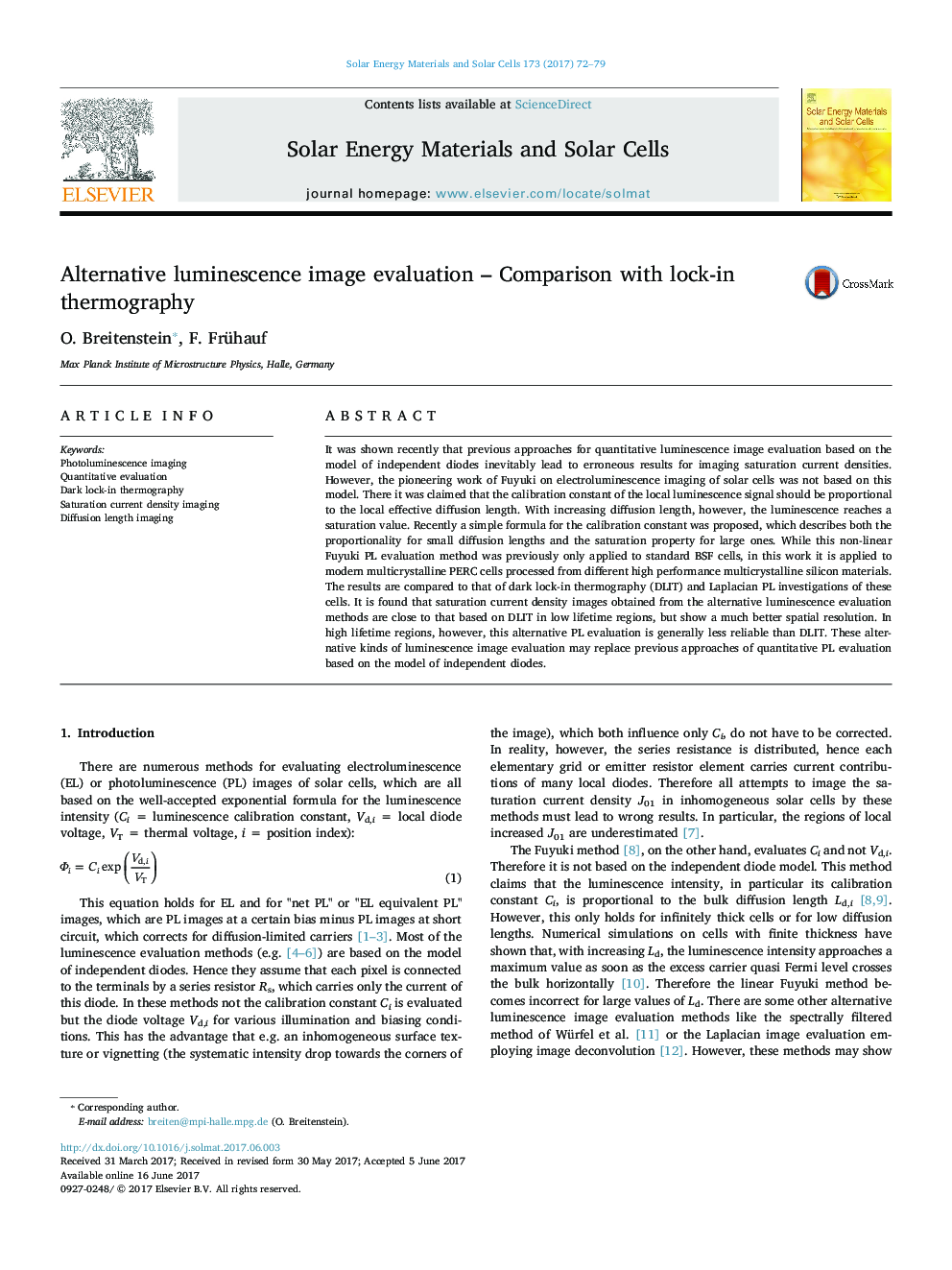| Article ID | Journal | Published Year | Pages | File Type |
|---|---|---|---|---|
| 6456783 | Solar Energy Materials and Solar Cells | 2017 | 8 Pages |
It was shown recently that previous approaches for quantitative luminescence image evaluation based on the model of independent diodes inevitably lead to erroneous results for imaging saturation current densities. However, the pioneering work of Fuyuki on electroluminescence imaging of solar cells was not based on this model. There it was claimed that the calibration constant of the local luminescence signal should be proportional to the local effective diffusion length. With increasing diffusion length, however, the luminescence reaches a saturation value. Recently a simple formula for the calibration constant was proposed, which describes both the proportionality for small diffusion lengths and the saturation property for large ones. While this non-linear Fuyuki PL evaluation method was previously only applied to standard BSF cells, in this work it is applied to modern multicrystalline PERC cells processed from different high performance multicrystalline silicon materials. The results are compared to that of dark lock-in thermography (DLIT) and Laplacian PL investigations of these cells. It is found that saturation current density images obtained from the alternative luminescence evaluation methods are close to that based on DLIT in low lifetime regions, but show a much better spatial resolution. In high lifetime regions, however, this alternative PL evaluation is generally less reliable than DLIT. These alternative kinds of luminescence image evaluation may replace previous approaches of quantitative PL evaluation based on the model of independent diodes.
